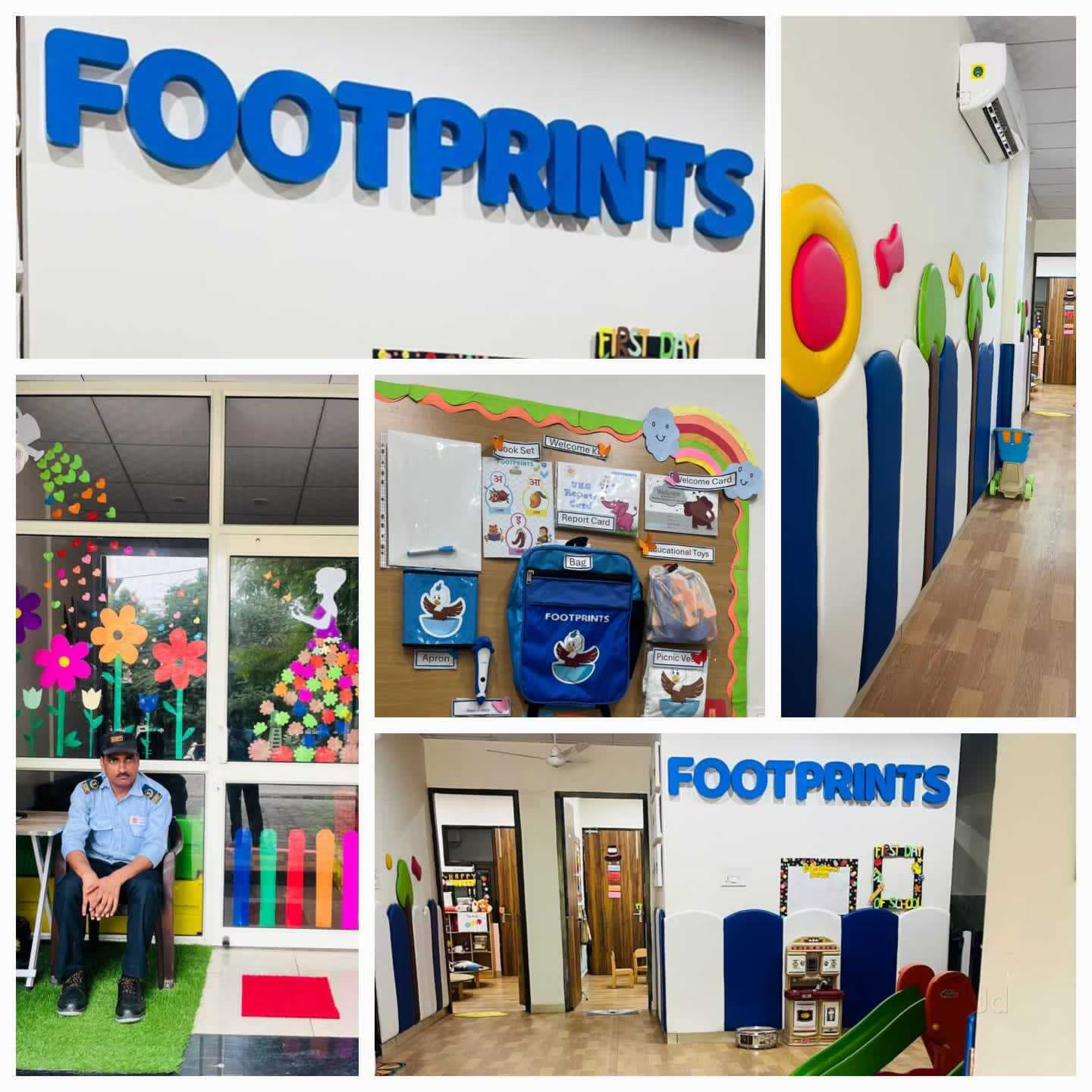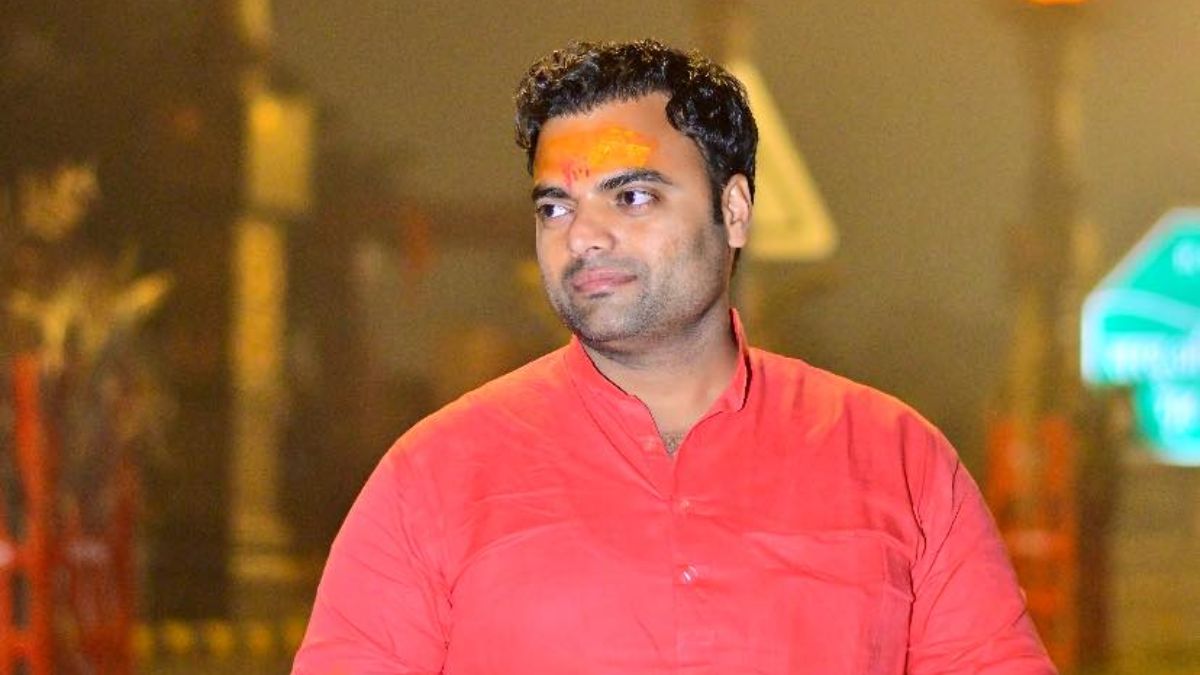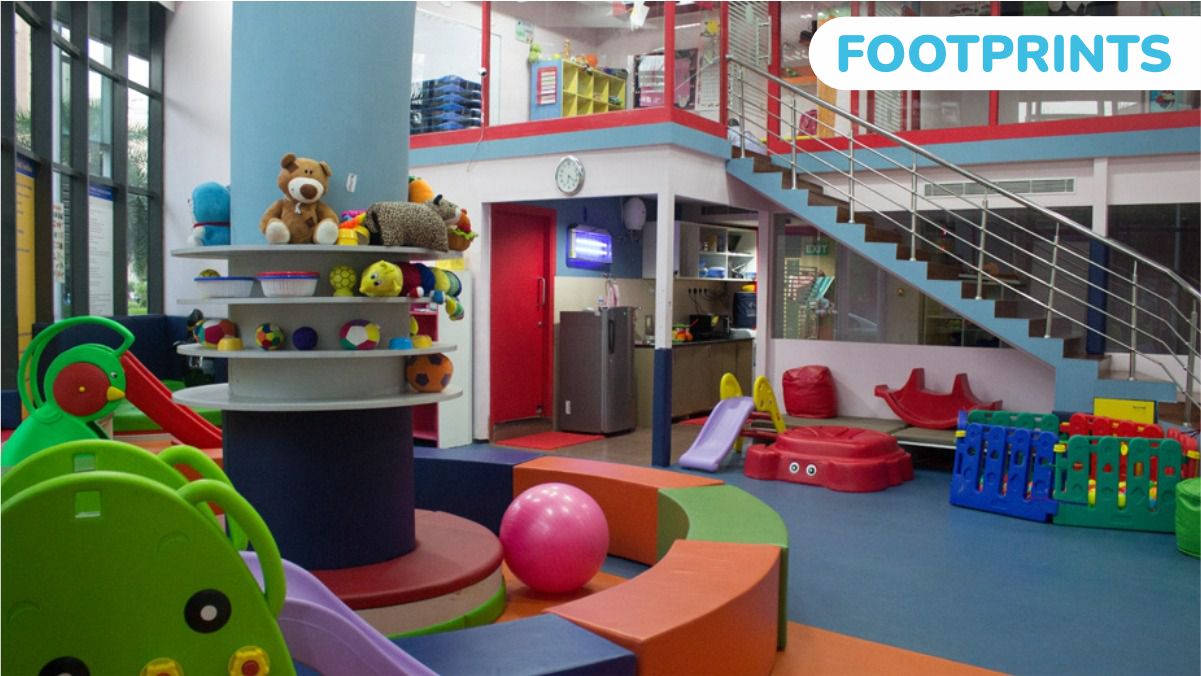In today’s world, early childhood education has moved far beyond “just keeping kids safe while parents work”. Increasingly, parents seek preschools and daycare centres that offer not only care but a meaningful foundation in learning, social skills, emotional development and preparation for school. One player making visible strides in this space in India is Footprints Education — more formally known as Footprints Preschool & Day Care. With a network of centres across many cities, an explicit emphasis on safety, and a curriculum rooted in research-based methods, Footprints is positioning itself not merely as a daycare provider but as a partner in a child’s formative years.
Table of Contents
1. Origins, Mission & Vision of Footprints Education
Founding & Leadership
Footprints Education is co-founded by alumni of top Indian institutions (IIT/IIM) who brought together expertise in technology, management and education. They founded this chain with the ambition of bringing high-quality early childhood education to Indian children across cities.
According to their “About Us” page, the leadership team includes:
CEO – Raj Singhal (B.Tech, IIT Delhi)
COO – Purvesh Sharma (B.Tech, IIT Delhi)
Co-Founder – Ashish Aggarwal (M.Tech IIT-D, MBA IIM-C)
They bring together backgrounds in technology, marketing, finance and education, signalling a hybrid of operational excellence and educational purpose.
Vision & Mission
The mission is to provide a safe, nurturing environment where children can develop cognitive, physical, social and emotional skills in their early years. Their tagline emphasises: “nurturing young minds” and “equipping children with a strong base for life”.
Safety features, parental involvement, live updates and high standards are core. Indeed, the website says:
“Children’s Safety is at the heart of everything we do. With our child-safe infrastructure, live CCTV access, and instant updates through our ParentConnect App.”
Scale & Growth
Footprints has grown significantly. According to their website: they serve over 53,000 parents across more than 197 centres in 28 cities.
In a press article, they announced plans to expand to about 350 centres by end of 2025, aiming to become one of India’s top three preschool players by revenue.
2. Pedagogy & Curriculum: The HighScope Approach
What is HighScope?
Footprints uses the HighScope curriculum (USA-based, ~65 years old) as its foundational pedagogy. HighScope emphasises active learning — children making choices, interacting with materials, learning in real context, rather than passive instruction.
From the website:
“Footprints Preschool follows HighScope Curriculum … based on active learning in which children learn and grow through play and fun activities.”
Key features of HighScope as described by Footprints include:
Choice Time: children choose materials and activities, developing decision-making skills.
Small-group Time: children in smaller groups with teacher scaffolding, giving chance to express themselves.
Structured daily routine giving balance of choice and adult-led activity.
Age-Groups & Adult-Child Ratios
Footprints describes their programs by age:
Toddler: 12-24 months (adult-child ratio around 1:5)
Playgroup: 24-36 months (ratio ~1:8)
Pre-Nursery: 36-48 months (ratio ~1:10)
LKG (48-60 months) & UKG (60-72 months) also follow 1:10 ratio.
Such ratios are better than many typical preschool settings, which helps in providing more individual attention and scaffolding.
Safety, Monitoring & Parent Engagement
One of the distinguishing features is parental transparency: live CCTV streaming, app updates of child activity, and open communication.
Their infrastructure is child-proofed, staff background-checked, and they emphasise a “non-junk food” policy (in certain centres) and nutritional meals.
3. Programmes & Services Offered
Footprints offers a broader ecosystem of early childhood services: daycare, preschool, after-care, homework help etc. Let’s break it down.
Daycare / Creche
For infants and toddlers (6 months to ~2 years) the “Day Care/Creche” program provides safe care, basic socialisation, age-appropriate play and early experiences. For example, at their Koramangala Bengaluru centre: Day Care for 6 months to 2 years with adult-child ratio 1:8.
Preschool (Playgroup / Pre-Nursery / LKG / UKG)
As described earlier, children from ~2 to 6 years move through playgroup, pre-nursery, LKG, UKG. The focus is on holistic development, both academic readiness and life skills. For instance:
“We build the confidence and core abilities required for success in youngsters… From playful play-group exploration to structured learning in junior and senior kindergarten.”
After Care / Homework Support
In some centres, Footprints offers after-care services for older children (48 months to ~120 months) which include homework help. At the Koramangala centre: After Care (48–120 months) with adult-child ratio 1:8.
Nutrition, Monitoring & Technology
100% nutritious food (no junk meals) in some centres.
Real-time mobile updates to parents (via app).
Live CCTV feed for parents.
Payment flexibility: the website mentions the ability to pause services, manage payments, refund if dissatisfied.
4. Locations & Expansion Strategy
Footprints Education has an extensive footprint across India and a clear expansion plan.
Current Presence
197+ centres across 28 cities as of their latest “About” page.
Their “Locations” page lists cities like Agra, Ahmedabad, Bengaluru, Chennai, Faridabad, Ghaziabad, Greater Noida etc.
Expansion Plans
A recent article in EdTech Review (published ~1.7 years ago) states: Footprints aims to open ~200 new centres by end 2025, expanding to ~350 centres and driving gross revenue run-rate to ~₹275 crore.
They emphasise Tier-A and Tier-B cities, and use of technology (AI) to monitor lesson delivery, cleanliness, adult-child ratios in real time.
Franchise Opportunities
Footprints provides franchise options. The website lists franchise enquiries for interested parties.
5. Why Parents Choose Footprints (Strengths)
Based on parent reviews, web-analysis and the brand’s own communications, here are key reasons why Footprints is chosen.
Quality curriculum: The HighScope approach is research-based and emphasizes active learning over rote teaching.
Safety & transparency: Live CCTV, child-proof infrastructure, nutrition policy, strong adult-child ratio.
Parent engagement: Real-time updates, app, parent-teacher meetings, transparent protocols.
Holistic early development: Emphasis on cognitive, social, emotional and physical development rather than test entry. For example, parent review:
“My child’s play school journey has been filled with so many special moments and milestones… The school environment was welcoming, with caring teachers.”
Strong teacher and support staff: The Koramangala centre lists a directress with 14 years’ experience and many awards for the centre.
Growing brand & infrastructure: As a chain, consistent standards and broader support systems help maintain quality across centres.
6. Potential Considerations / Areas to Verify (What Parents Should Ask)
While Footprints Education has many strengths, as with any preschool, parents should do due diligence. Here are aspects to verify:
Centre-specific performance: While brand standards may be high, individual centres may vary in execution (staff experience, infrastructure, management). Visiting the specific location is advisable.
Fee structure & transparency: Some sources list the fee for a centre in Gurugram (Pre-Nursery ~ ₹75,999 for first year) which may give a sense of cost.Ensure you understand what’s included (food, monitoring, after-care, etc).
Adult-child ratio in practice: Though the brand mentions ratios, check the actual ratio at the specific branch you’re evaluating.
Curriculum vs readiness for next school: While the HighScope curriculum emphasises active learning and foundations, you may want to ask how the preschool readies children for their next stage (primary school) and aligns with your expectations.
Safety protocols & monitoring clarity: Live CCTV is a plus — verify actual access, network reliability, data privacy, how early/late hours are managed (if needed), drop/pick-up protocols.
Nutrition and meal policy: If the centre claims “100% nutritious food” or “non-junk policy”, see sample menus, allergies protocols, etc.
After-care/homework support: If you need after-care beyond the preschool hours or support for older children, confirm what services are offered.
Parent-teacher communication & transparency: Ensure you will receive regular updates, progress reports, and have access to teachers when needed.
Franchise vs company-owned centre: Since Footprints Education uses a hybrid model, the quality of a franchise centre might differ slightly from a company-owned one. Investigate the specific centre’s governance and oversight.
7. Footprints vs Other Preschool Models
To help parents situate Footprints Education in the broader preschool market in India, here are some comparison points:
Brand chain vs standalone school: Footprints is a chain with many centres, standardized curriculum and policies. Standalone preschools may offer more local flexibility but may vary in consistency.
Curriculum choice: Many Indian preschools use Montessori, Play-Way, activity-based methods. Footprints’ use of HighScope gives it a more structured design of active learning with research backing.
Safety & tech features: Footprints emphasises live monitoring and app updates — this may not be available at smaller preschools.
Cost: Chains with strong brand and facilities (like Footprints) may cost more compared to modest play-schools, but the higher cost may bring more features and assurance.
Transitions to primary school: Some preschools are more play-centred and may not emphasise the transition to formal schooling; Footprints indicates they prepare for primary schooling.
Expansion & scalability: Footprints’ large network allows for potential mobility (if you move cities) and standardized policies; smaller preschools might be more localized.

8. How to Evaluate & Choose a Preschool – A Checklist (with Footprints in mind)
Here’s a practical checklist for parents:
Visit the centre: Observe classrooms, play-areas, hygiene, teacher-child interactions.
Ask about curriculum: How does the preschool implement it? (For Footprints, ask how HighScope is being deployed).
Child-teacher ratio: What is the actual ratio and how is supervision ensured?
Safety features: Is there CCTV, secure entry, background-checked staff, emergency protocols?
Parental access: Live feed, app updates, parent-teacher meetings, reports.
Meal plan & nutrition: Menu, allergies, junk-food policy, food hygiene.
Transition support: How does the preschool assist children moving to primary school?
After-care & extended services: Are there options for older children, homework help, flexible hours?
Fee and inclusions: What is included in the fee? Are there extra charges for meals, app, transport, after-care?
Reviews & track record: What do other parents say? Visit online reviews (for example, Footprints centres have positive reviews in Bengaluru and Gurgaon).
Using this checklist while considering Footprints or any preschool will help you make an informed choice.
9. Footprints: Case Study Snapshot – Bengaluru Centre
To illustrate how Footprints works on the ground, consider their Koramangala, Bengaluru centre:
Offers Day-Care (6 months–2 yrs) with adult-child ratio 1:8.
Preschool (3-6 yrs) with adult-child ratio 1:10.
After-Care (48-120 months) with adult-child ratio 1:8.
Infrastructure: Live CCTV streaming, app updates, world-class ratio, trained staff.
Awards: The centre mentions awards like “Innovation for Curriculum” and “Leading Preschool in India”.
Parents’ feedback:
“My child’s play school journey has been filled with so many special moments… The school environment was welcoming, with caring teachers who played a crucial role.”
This snapshot provides a concrete view of how a Footprints centre may operate and be perceived.
10. Challenges & Future Prospects
Challenges
Maintaining consistency across many centres: As the network grows, ensuring all centres adhere to high standards (curriculum fidelity, staff training, safety norms) becomes complex.
Cost vs accessibility: For many parents, high-quality preschools entail significant fees; balancing quality with affordability is an ongoing challenge.
Transitioning to digital/remote modes: Especially post-COVID, early education centres must adapt to remote learning, hybrid formats — maintaining the same quality of play-based learning is non-trivial.
Competition: The Indian early-childhood education market is crowded, with many players offering varied curricula, facilities, and promises; differentiating and sustaining is key.
Future Prospects
Footprints’ expansion to ~350 centres by end 2025 indicates significant growth potential.
Their use of technology (AI for monitoring, parent-apps) positions them well for the future of early-education where data, transparency and real-time feedback matter.
More urbanisation and dual-income families increase demand for high-quality daycare + preschool solutions — Footprints is well placed to serve that need.
Potential to extend services: into K-12 preparation, enrichment programs, international tie-ups or hybrid models might be possibilities.
Conclusion
The early years of a child’s life lay the groundwork for lifelong learning, social development and emotional health. Choosing the right preschool or daycare is a key decision, and for many parents in India, Footprints Education (Footprints Preschool & Day Care) emerges as a compelling option. With its research-based curriculum (HighScope), strong infrastructure and safety emphasis, parent-friendly monitoring and growing pan-India presence, it provides a robust platform for early childhood growth.
However, like any education investment, the success depends on the specific centre, the staff, the child’s compatibility and how engaged the parents are. I recommend visiting the nearest Footprints Education centre, observing classes, talking to teachers, meeting other parents, and verifying that the facility aligns with your family’s expectations. Given the critical nature of preschool years, investing time in the decision will pay dividends for your child’s growth.
FAQs
Q1. What age groups does Footprints cater to?
Footprints offers programmes starting from as early as ~6 months (in some daycare/creche segments) up to about 6 years (UKG) and even after-care for older children (~48-120 months in some centres).
Q2. What curriculum does Footprints use, and how is it different?
Footprints uses the HighScope curriculum — a US-based approach emphasising active learning, choice time, small-group interaction and hands-on materials rather than passive teaching.
Q3. What is the adult-child ratio?
For example, the Koramangala centre lists: Day-Care 1:8, Preschool 1:10, After-Care 1:8. Ratios may vary by centre and age group; you should check your local branch.
Q4. How can parents monitor their child’s day at the preschool?
Footprints offers live CCTV streaming in many centres, mobile updates via an app, and regular parent-teacher meetings.
Q5. How many centres does Footprints have and where?
As per their own website: 197+ centres in 28 cities across India, with more planned. Their “Locations” page lists many major cities.
Q6. What is the fee structure like?
Fees vary by centre, age group, location and services. One example: at one Gurugram centre, Pre-Nursery was quoted ~₹75,999 for first year. Check with your local centre for exact fees, what’s included, additional charges.
Q7. Are there franchise opportunities with Footprints?
Yes — the website indicates franchise enquiries and corporate-creche tie-ups.
Q8. What services are offered beyond preschool?
In many centres, after-care, homework support for older children, flexible hours, daycare/creche for infants/toddlers, and nutritionally managed meals are offered.
Q9. How do I verify if a specific Footprints branch is good?
Visit the branch, talk to staff and other parents. Check infrastructure, safety features, ask about teacher qualifications, child-teacher ratio, parent-app functionality, meal plan, daily schedule, transition into primary schooling. Use the checklist above in section 8.
Q10. How does Footprints prepare children for the next stage (primary school)?
Footprints claims that after the preschool segment (LKG/UKG) children transition smoothly into primary school because the foundations of decision-making, social skills, emotional regulation, activity-based learning have been developed. Ask your local branch for details on transition programmes, readiness assessments, parent orientation for primary school entry.
Q11: Where are Footprints centers located in Delhi?
Locations include Prashant Vihar, Shakti Nagar Extension, Janakpuri, Kalkaji, Mansarover Garden, Dwarka Sector 17 and Rohini sec 23.
Q12: Can parents monitor their children during school hours?
Yes, parents can watch live feed from CCTV cameras via the Footprints app.
Q13: How can parents manage admissions and payments?
The Footprints app allows parents to manage admissions, payments, program changes, and refunds easily.











